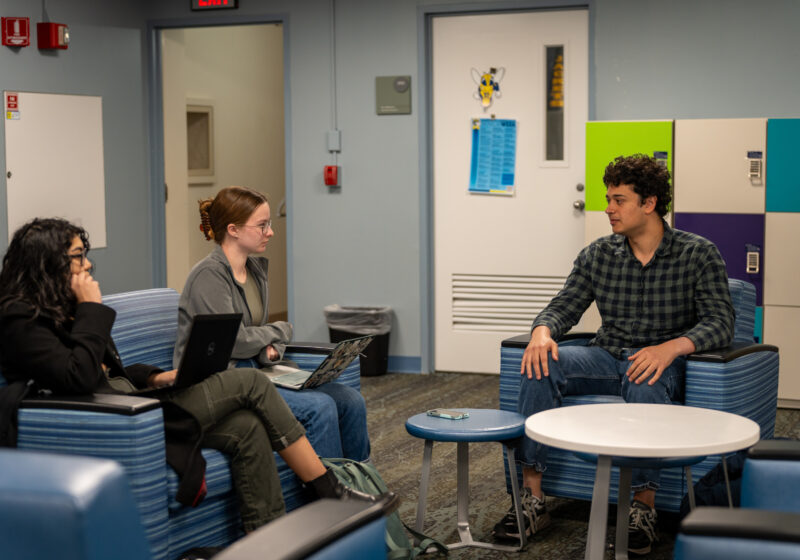Two UR scientists, Professor of Biology Jack Werren and Professor of Microbiology and Immunology at UR Medical Center John Treanor, were featured by Discover magazine’s Top 100 Science Stories of 2007 for their contributions to their respective fields.
Werren received a $5 million dollar grant five years ago to study how Wolbachia, a genius of bacterium, affects the genome of its host cells in insects. Werren’s published findings can potentially affect how the evolutionary genetics field views bacterial evolution and how it will conduct future research projects, according to a UR August 2007 press release by Jonathan Sherwood.
National Science Foundation’s Frontiers in Integrative Biological Research program, which strives to address questions pertinent to biology, funded Werren’s project. Werren worked together with colleagues from the J. Craig Venter Institute. The institute specializes in genomic research in its laboratories located around the country.
The research specifically focused on how the parasitic bacteria, Wolbachia, affects the genome of its host cells in insects. Wolbachia is Werren’s area of expertise; he is a leading expert on the bacteria, which is most commonly found in insects’ reproductive organs.
Werren’s most recent publication challenged previous thinking that gene exchange between bacteria and multicellular organisms is rare.
It appears that this “lateral gene transfer” between unrelated species occurs much more frequently than scientists had previously thought.
Werren found that Wolbachia’s genes were present in cells even after the bacteria were killed with antibiotics. The reproductive hosts’ cells had maintained copies of the parasite’s genes. This appeared unusual to scientists studying the bacteria, who first assumed the bacteria might have survived the antibiotic.
Research associate Michael Clark explained his initial reaction to this finding.
“For several months, I thought I was just failing,” Clark said. “I started thinking maybe the strain had grown antibiotic resistance. After months of this I finally went back and looked at the tissue again, and there was no Wolbachia there at all.”
The researchers found that Wolbachia’s entire genome was integrated in its hosts’ cells, something these men described as unexpected.
“It didn’t seem possible at first,” Werren said. “This parasite has implanted itself inside the cells of 70 percent of the world’s invertebrates, co-evolving with them. And now, we’ve found at least one species where the parasite’s entire or nearly entire genome has been absorbed and integrated into the host’s.”
Werren explained that he believes the cell’s behavior is a result of accidental absorption of Wolbachia’s genes when the cell routinely repairs its DNA.
Implications of Werren’s findings will also affect how scientists currently disregard bacterial DNA when considering invertebrate’s genome.
Werren intends to research the effects of the genome’s presence in insects with Clark. He believes these adaptatons may provide some advantages to the host.
“The chance that a chunk of DNA of this magnitude is totally neutral, I think, is pretty small, so the implication is that it has imparted of some selective advantage to the host,” Werren said.
“It’s possible Wolbachia may follow in the path of mitochondria, eventually becoming a necessary and useful part of a cell,” Werren said.
Treanor conducts different research than Werren. Treanor was also cited by Discover magazine for his contributions to science.
He worked with scientists across the nation to achieve the successful development and testing of the FDA-approved bird flu vaccine. The vaccine was approved earlier this year.
Treanor helped demonstrate that large doses of the vaccine are actually safe. The vaccine is also effective for public use.
Discover magazine highlighted other research conducted by Treanor earlier in 2007.
Treanor’s research studied developing a flu vaccine grown in insect cells, instead of eggs.
Treanor was able to complete his research in Rochester, with the help of Rochester area volunteers. These volunteers served as study subjects for his research. Treanor commented on how grateful he was to these volunteers.
“We feel very honored to have been able to contribute to this important effort, and we are especially grateful to our volunteer study subjects, without whom none of this research would have been possible,” says Treanor.
“Because of the willing participation of Rochesterians, we have something we can really use to fight off a bird flu pandemic, if it ever occurs.”
UR research has been listed among Discover magazine’s top 100 science studies in prior years.
In 2006, there were three named for contributions in the fields of neurology, optics and cancer research.
Leber is a member of the class of 2011.

